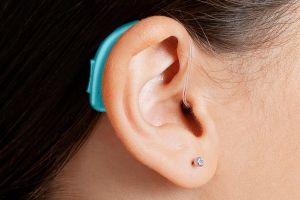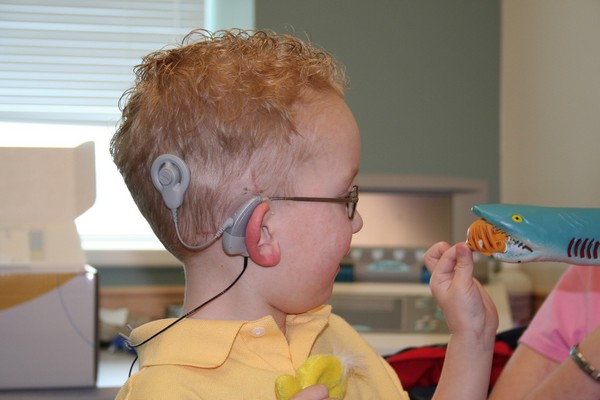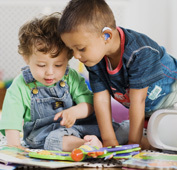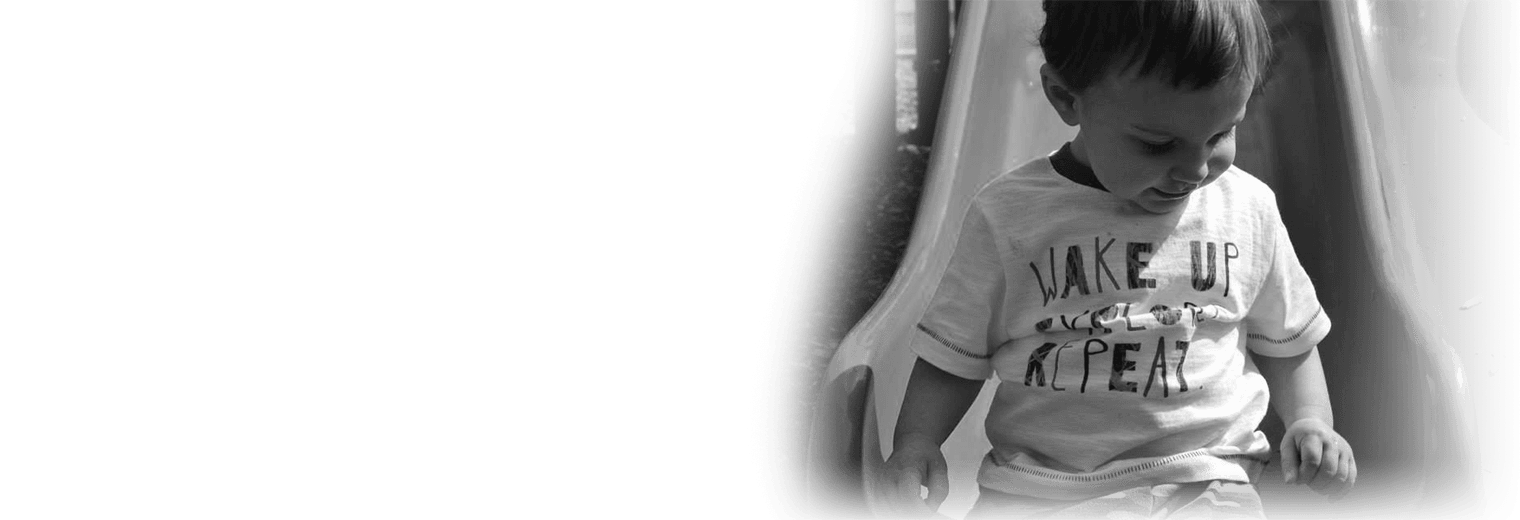|
www.HealthyHearing.com |
Hearing aids for kids
By Mandy Mroz, AuD, Former President, Healthy Hearing  Reviewed by
Heidi Leonard, AuD, CCC-A, senior audiologist , Mass Eye and Ear Reviewed by
Heidi Leonard, AuD, CCC-A, senior audiologist , Mass Eye and Ear Last updated on: September 25th, 2025 What you need to know about children's hearing aids and helping your child hear their best. Key points:
It can be upsetting to discover your child has hearing loss, especially if you aren't familiar with it as a health condition. However, it's more common than you might think: About 2 out of every 1,000 children are born with hearing loss in one or both ears, according to the National Institute on Deafness and Other Communication Disorders (NIDCD). Fortunately, many treatment options exist. For most families of children with hearing loss, the first important step toward hearing health will be having your infant or child fitted with hearing aids. Hearing aids are vital for language development. If an audiologist recommends hearing aids for your child, it's important that he or she wears them continuously to help with speech and language development. How do pediatric hearing aids work?Hearing aids for kids work the same way adult hearing aids do, but come with a few special features, too. 
Photo courtesy of Oticon. 
receiver-in-the-ear style, which is meant to be used for older children. Photo courtesy of Oticon. All hearing aids have four basic parts:
Special added features that are typical for children's hearing aids:
Younger kids vs. older kidsInfants and younger children typically wear a behind-the-ear hearing aid and an earmold that fills the concha, or bowl, of the ear. Children ages 10 and older may wear a small unit that sits behind their ear, with a thin tube and small plastic dome that fits snugly in the ear canal. What about teens?Younger teens often start with pediatric hearing aids, which typically need to be updated every 1-2 years as their ears grow. Older teens can transition to adult hearing aids, which last 3-7 years with proper care. Read more about teen hearing loss and hearing aids for teens. How young can children wear hearing aids?Hearing aids can be put on babies just a few months old. The CDC recommends that kids who are identified as having hearing loss at birth get treatment before six months of age. As they grow, children will need periodic hearing exams and new hearing aids, determined by your hearing care provider. What about cochlear implants?
hearing loss, but some need cochlear implants. Most children with hearing loss are able to benefit from hearing aids, though some will do better with a cochlear implant. Your child's audiologist and other hearing health care professionals will determine whether your child is a candidate for hearing aids or cochlear implants. Children often start with hearing aids initially, and then become a candidate for a cochlear implant once they're older. Bone-anchored hearing devicesFor some kids, a type of hearing aid known as a bone-anchored hearing system may be the better option, particularly if they have conductive hearing loss, meaning the hearing loss is due to the outer or middle ear not conducting the sound properly, but the hearing nerves are intact. Is there a best brand of hearing aid for kids?There are many different hearing aids made for kids, from all the major manufacturers. All of them tend to offer similar features and get updated every year, making it hard for us to name the "best" hearing aid for kids. Perhaps more important than buying the best brand is finding an audiologist who offers compassionate and ongoing care, as they stay up-to-date on all the latest technology and are experts in their field. Hearing aid fitting for childrenWhen you go for a hearing aid appointment, this is the basic process: 1. Taking ear impressionsThe first step of a hearing aid fitting is usually to take impressions of the ear canals. These must be taken to ensure that the earmolds for your child's hearing aids fit perfectly. The hearing professional will place a cotton or foam dam deeply into the ear canal and then carefully fill the canal with soft, rubber-like impression material. To make sure all the ear structures are represented accurately, the impression material will fill the entire outer ear. The material takes a few minutes to set, so parents are often called on to hold the infant or child to keep inquisitive hands out of the way. 
make wearing hearing aids more fun for kids. 2. Selecting new earmoldsOnce the impression is ready, earmolds can be ordered. They come in a variety of colors; parents can choose a different color for each ear in order to make it easy to quickly determine which earmold fits which ear. As the child grows, new earmolds will be needed periodically and colors can be changed as desired. Older children often enjoy picking out the color. You can also choose a "clear" earmold. The audiologist will mail out the ear impressions and it will take up to two weeks to receive the custom earmolds order. In the first five years of life, a child may need new earmolds every few weeks to months. Parents must learn to recognize the whistling sound that indicates hearing aid feedback—a sign that the earmolds aren't fitting as well anymore and it's time for a new one. 3. Fitting the hearing aidsDuring this appointment, the audiologist will make sure the earmolds fit your child's ears properly and program the hearing aids for your child's hearing loss. When the hearing aids are programmed and activated for the first time, your child will begin to hear new sounds right away. Infants tend to have an immediate reaction to mom or dad's voice, turning their head with interest toward the parent who now makes sound. A toddler might smile in response to the new stimulation. After the initial programming and activation, the audiologist will do some verification tests to make sure that soft sounds are loud enough, average sounds are comfortable and loud sounds aren't too loud.
4. Education and guidanceAccording to the American Speech-Language-Hearing Association, your child's audiologist will teach you and your child (if applicable) how to place and remove the hearing aids, connect and disconnect the earmold or dome from the aid, and how to tell the difference between the right and left aids. You will learn how to turn them on and off, how to do a listening check to make sure they're functioning and how to replace or recharge the battery. You will also learn how to keep the hearing aids clean and how to store them each night. 5. Follow-up careIt will take time for your child to learn how to use the new sounds they perceive. Speech and language therapy will help the infant or child catch up to same-age peers and make sure milestones for speech, language and hearing are being met. Frequent follow-up appointments with the audiologist will be necessary to monitor hearing ability, and to check the function and fit of the hearing aids. As children get older, their hearing ability and ear anatomy changes, so ongoing hearing care is vital. They will likely need to get new hearing aids from time to time.
How can parents help their children with hearing aids?Tips for keeping them onIt can be difficult to keep hearing aids on your child, especially toddlers and children who have not worn them consistently since infancy. If your child resists hearing aids or frequently pulls them off, there are some ways to make hearing aids more comfortable.
Your audiologist can help you find headbands and clips that will work for your child. If your child is reluctant to wear hearing aids, or new to wearing them, these children's books about hearing loss may help them emotionally process the experience. A hearing aid routineAdditionally, it's a good idea to develop a routine each day for putting your infant or child's hearing aids on. Spend time cuddling and holding your child when you put their hearing aids in to develop a positive association with them. When your curious child pulls the hearing aids off, be consistent but gentle in replacing them each time so he or she knows that's where they belong. If your child repeatedly pulls on the hearing aids or his or her ears, this might be a sign of discomfort from a poorly fitting earmold. See your child's audiologist right away to find out if it's time to get a new pair of earmolds. Daily checksChildren's hearing aids need to be checked daily, especially for children who are too young to tell you if there is a problem. You'll want to do a listening check, make sure the battery is working and check the hearing aids for debris and moisture. Remember, if you can't hear sounds amplified through the hearing aids then your little one will not be able to hear through it, either. You'll also want to do a visual check before placing the hearing aids each time. Make sure the hearing aids and earmolds are clean and free of moisture. Disconnect the earmold from the hearing aid if it is dirty. Use a bulb syringe to blow any moisture out of the earmold or tubing and remove any debris from the earmold with a tissue or disinfectant wipe. When the earmold is thoroughly dry, connect it to the hearing aid again and place it back in your child's ear. SafetyFor infants and children, choose hearing aids that have secure battery doors so they cannot get the hearing aid batteries out themselves. Babies like to put things in their mouths, so always store batteries safely out of reach of children and pets. Note: If your child has swallowed a hearing aid battery, seek emergency medical care right away. Time is of the essence. More on hearing aid battery safety. Classroom help for kids with hearing lossMost hearing aid manufacturers who sell pediatric hearing aids and cochlear implants also make assistive listening devices to enhance classroom learning. Typically, a teacher wears a microphone and the receiver is attached to the child's hearing aid. Finding a hearing specialist for your childIf you have concerns about your child's hearing, it's important to make an appointment with a hearing specialist to check their ears and test their hearing ability. Early treatment is essential for their academic and social development. Check out our hearing directory to find a provider near you. Note that not all hearing specialists provide pediatric care, so make sure to inquire before scheduling an appointment. This article has been medically reviewed by Heidi J. Leonard, AuD, CCC-A, a senior audiologist at Mass Eye and Ear. Dr. Leonard is a nationally certified and state licensed audiologist with more than 25 years of experience. Dr. Leonard specializes in pediatric audiology, traditional and bone-anchored hearing aids and cochlear implants. Mandy Mroz, AuD, Former President, Healthy Hearing
You are reading about: Related topics
More information about hearing loss, hearing aid brands, assistive devices and tinnitus. Featured clinics near me
Earzlink Hearing Care - Reynoldsburg Find a clinicWe have more hearing clinic reviews than any other site! Related contentThe Healthy Hearing Report |
|
www.HealthyHearing.com |
Hearing aids for kids
By Mandy Mroz, AuD, Former President, Healthy Hearing  Reviewed by
Heidi Leonard, AuD, CCC-A, senior audiologist , Mass Eye and Ear Reviewed by
Heidi Leonard, AuD, CCC-A, senior audiologist , Mass Eye and Ear Last updated on: September 25th, 2025 What you need to know about children's hearing aids and helping your child hear their best. |



 Dr. Mandy Mroz earned her doctorate in audiology from the University of Florida. Mandy’s career is guided by her dedication to serving people with hearing loss and her past experience in hearing research, training and management.
Dr. Mandy Mroz earned her doctorate in audiology from the University of Florida. Mandy’s career is guided by her dedication to serving people with hearing loss and her past experience in hearing research, training and management.